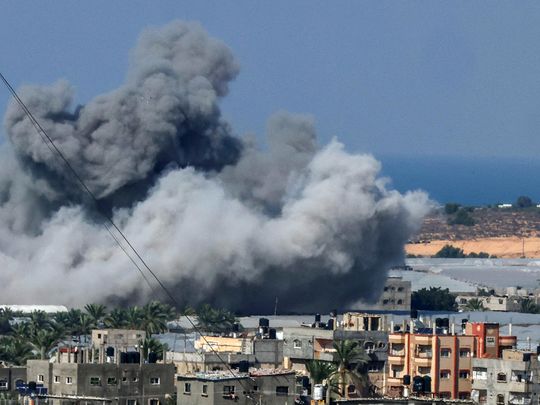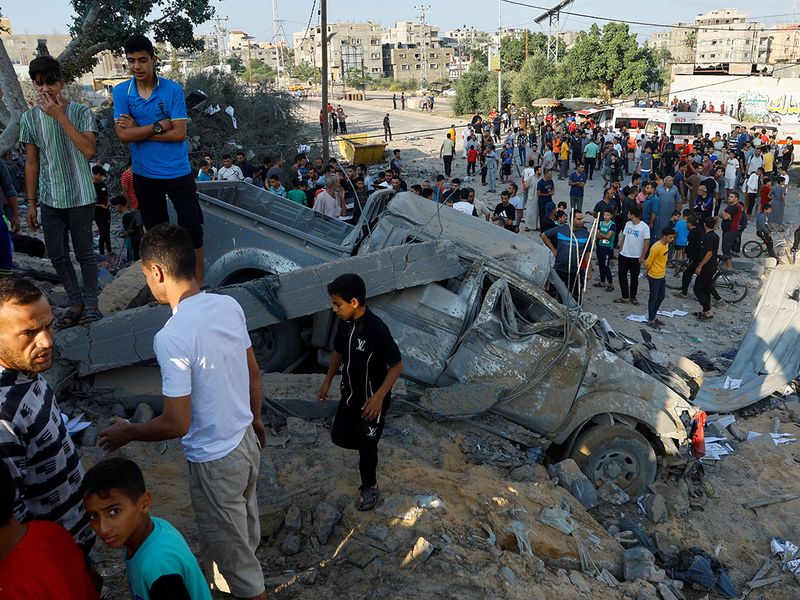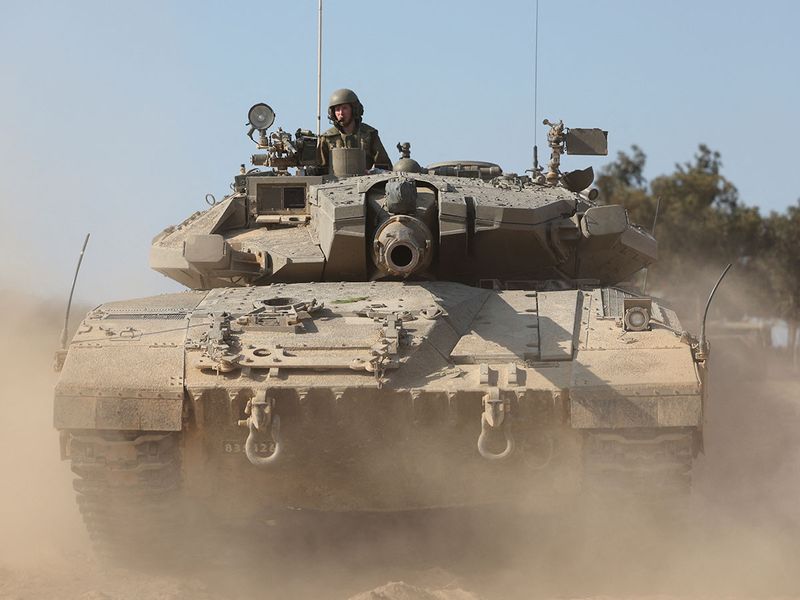
The Gaza Strip, home to 2.3 million civilians, is currently facing a dire situation due to the ongoing war between Israel and Hamas. This conflict, marked by relentless air strikes, ground operations, and a total blockade, has led to significant loss of life and a deepening humanitarian crisis.
The international community must prioritise efforts to bring an immediate ceasefire and finding ways about lasting peace in the Middle East, with a focus on ending the cycle of violence in Gaza and addressing the dire humanitarian situation.
Since hostilities began on Oct. 7, the Gaza Strip has witnessed a devastating toll on its civilian population. The use of white phosphorus munitions, considered a violation of international humanitarian law by experts, further compounds the suffering of the already beleaguered population.
Grave humanitarian crisis
Gaza, with nearly half of its residents under 18 years old, has endured severe restrictions and blockades for years, leading to extreme suffering. The closure of the Rafah crossing to Egypt following the escalation of the ongoing war has exacerbated the humanitarian crisis in Gaza.
Adding to the crisis, Israel has ordered over a million people in northern Gaza to evacuate and move to the south. Despite the evacuation order, it is almost impossible for older persons, pregnant women, children, and persons with disabilities to flee from the area.
As described by the World Health Organisation (WHO), Israel’s evacuation orders for hospitals in northern Gaza amount to a death sentence for the sick and injured.
Due to the blockade and relentless bombings, Gaza is facing a lack of clean drinking water, electricity, severe shortages of food and medicine, and more than half a million people have already been displaced. Despite the grave humanitarian crisis in Gaza, the narrative surrounding the conflict is deeply concerning.

Children in solitary confinement
Western leaders have shown strong support for Israel and its military operations, citing Israel’s “right to defend itself,” while largely omitting mention of the suffering in Gaza.
As Martin Griffins, Chief of the UN’s Relief Agency, aptly describes, “The past week has been a test for humanity, and humanity is failing.” Even in times of war, there are rules and regulations that must be followed. The international community must uphold human rights and international law and recognise the suffering of Palestinians through collective punishment.
Palestinians in Gaza have endured decades of suffering, with the blockade in place since 2007 constituting a violation of international law. They face constant confinement, surveillance, and punishment, including the imprisonment of children in solitary confinement.
The Gaza Strip has experienced five major wars up to Oct. 7, 2023, with nearly 80 per cent of its population relying on humanitarian assistance. More than two million people live in abject poverty, with nearly 80 per cent of the youth facing unemployment.

Symbol of Palestinian hardship
Last year, international agencies appealed for funds to provide essential services like food, water, sanitation, and health care in Gaza, but only 25 per cent of the funding was received. The ongoing carpet bombing and mass evacuation orders from Gaza City have exacerbated the humanitarian catastrophe for more than two million people.
The escalation of the conflict in Gaza and the lack of any significant effort to achieve a ceasefire have the potential to further destabilise the region. The suffering in Gaza has become a symbol of Palestinian hardship, fuelling anger and frustration across the Middle East and beyond.
Millions of Palestinians in Gaza are now facing death while trapped in a cycle of poverty, unemployment, and despair. The dire humanitarian situation in Gaza not only has regional implications but also threatens global peace and security.
The international community, including key regional and global players, must work to achieve an immediate ceasefire between Israel and Hamas and renew their efforts to facilitate dialogue and negotiations between Israelis and Palestinians.

Interconnectedness of regional conflicts
The Middle East peace process remains a crucial platform for diplomacy, but it requires renewed commitment and creativity. International mediation efforts should focus on addressing the root causes of the conflict, including the status of Jerusalem, borders, security, refugees, and the future of settlements.
A two-state solution that ensures security and self-determination for both Israelis and Palestinians remains a viable path to peace. Moreover, humanitarian organisations and donor countries should step up their efforts to provide much-needed aid and support to Palestinian population.
The global community must unite behind initiatives aimed at ending the war and then rebuilding Gaza’s infrastructure, revitalising its economy, and improving living conditions for its residents. The ongoing war is a humanitarian disaster with far-reaching implications. The interconnectedness of regional conflicts, the potential for wider destabilisation, and the humanitarian impact demand urgent international attention and action.
It is incumbent upon the international community to prioritise efforts to halt the war as quickly as possible and bring about lasting peace in the Middle East. The suffering in Gaza is not just a tragedy for its people; it is a stain on the conscience of the world.
The time has come to redouble the international community’s efforts to end this cycle of violence and despair. Only through sustained diplomatic engagement, international cooperation, and a commitment to justice and human rights can the world hope to bring about lasting peace and stability in this troubled land. Palestinians deserve nothing less.







